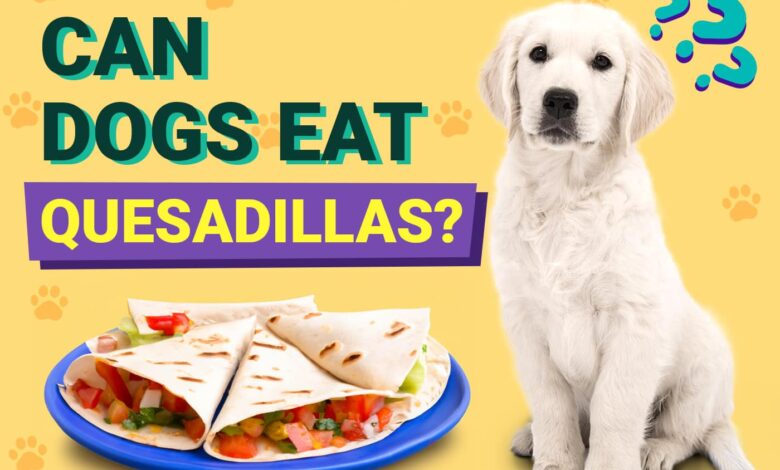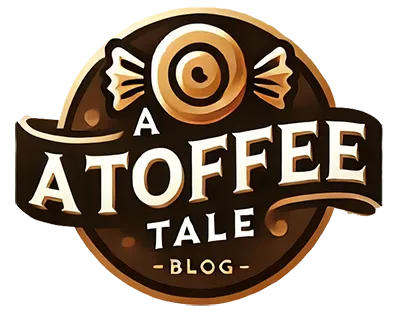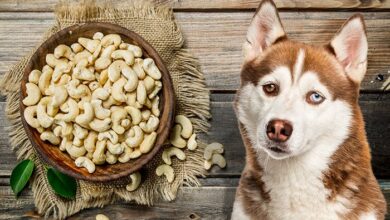Can My Dog Eat Quesadillas? Tips for Pet Owners

When it comes to preparing quesadillas for your dog, being mindful of ingredients can make all the difference in their health and enjoyment. While quesadillas typically feature tortillas, cheese, meats like chicken or beef, and sometimes vegetables such as bell peppers or mushrooms, certain additions can pose serious risks to dogs. Onions and garlic, common flavor enhancers in many recipes, are particularly toxic to dogs and can lead to severe health issues like gastrointestinal upset or even organ damage. Additionally, some spices and seasonings used in quesadillas may contain ingredients that are unsafe for canine consumption, so it’s crucial to read labels carefully and opt for plain, unseasoned alternatives whenever possible.
To ensure your dog can safely enjoy a quesadilla-inspired treat, consider safe alternatives to potentially harmful ingredients. Instead of onions and garlic, which should always be avoided, you can incorporate dog-friendly vegetables like carrots, peas, or spinach, which offer nutritional benefits without the risks. Opting for plain tortillas and unseasoned meats ensures a simpler and safer meal for your furry friend. By making informed choices about ingredients and prioritizing their well-being, you can share enjoyable moments with your dog while keeping their health at the forefront.So, let’s explore that- can dogs eat quesadillas?
Tortillas: Are They Safe for Dogs?
Tortillas can be a part of a dog’s diet if given in moderation and prepared correctly. Here’s what you need to know about different types of tortillas, potential digestive issues, and recommended serving sizes.
Types of Tortillas
- Corn Tortillas: Made from ground corn, these are generally considered safer for dogs. They are less processed than flour tortillas and contain fewer additives.
- Flour Tortillas: Made from wheat flour, these tortillas are more processed and may contain added fats and salts, which are not ideal for dogs.
Potential Digestive Issues
While tortillas are not toxic to dogs, they can cause some digestive problems, especially if consumed in large quantities or if your dog has a sensitive stomach. Common issues include:
- Gas and Bloating: Both types of tortillas can cause gas and bloating, particularly if your dog is not accustomed to eating grains.
- Allergic Reactions: Some dogs may have allergies to wheat (found in flour tortillas) or corn, leading to symptoms such as itching, skin rashes, and gastrointestinal distress.
Recommended Serving Sizes
Moderation is key when feeding tortillas to dogs. Here’s how to serve them safely:
- Small Portions: Offer small pieces of tortilla as an occasional treat rather than a regular part of their diet.
- Avoid Additives: Ensure the tortillas are plain, without added salt, spices, or oils.
- Monitor Reactions: Observe your dog for any adverse reactions after introducing tortillas to their diet, and consult your veterinarian if any issues arise.
Tortillas can be given to dogs in moderation, with corn tortillas being the safer option. Be mindful of potential digestive issues and allergies, and always serve in small, plain portions. When in doubt, consult your veterinarian for personalized advice on including tortillas in your dog’s diet.
Cheese and Dogs: Pros and Cons
Cheese can be a tasty treat for dogs, but it’s essential to understand the types of cheese, the issue of lactose intolerance, and the benefits and risks involved.
Types of Cheese in Quesadillas
- Common Types: Quesadillas often use cheeses such as cheddar, mozzarella, and Monterey Jack. These cheeses vary in fat content, flavor, and lactose levels.
- Low-Lactose Options: Hard cheeses like cheddar and Swiss contain less lactose than soft cheeses, making them a slightly better option for lactose-intolerant dogs.
Lactose Intolerance in Dogs
- Prevalence: Many dogs are lactose intolerant, meaning they lack the enzyme lactase needed to digest lactose, a sugar found in milk and dairy products.
- Symptoms: Signs of lactose intolerance include diarrhea, gas, bloating, and abdominal discomfort. If your dog exhibits these symptoms after consuming cheese, it’s best to avoid giving it to them.
Benefits and Risks of Cheese
Benefits:
- Protein Source: Cheese is high in protein, which is essential for muscle development and repair.
- Calcium: It provides calcium, which supports bone health.
- Training Aid: Cheese can be used as a high-value treat for training due to its strong smell and taste.
Risks:
- High Fat Content: Many cheeses are high in fat, which can lead to weight gain and pancreatitis in dogs if consumed in large amounts.
- Sodium Levels: Cheese can contain high levels of salt, which is harmful to dogs if ingested in large quantities.
- Allergic Reactions: Some dogs may be allergic to dairy products, leading to itching, hives, and gastrointestinal issues.
While cheese can offer some nutritional benefits for dogs and serve as an effective training treat, it should be given in moderation. Be cautious of lactose intolerance and opt for low-lactose varieties when possible. Always monitor your dog for any adverse reactions and consult with your veterinarian to ensure cheese is a safe addition to your dog’s diet.
Meat Fillings: What’s Safe and What’s Not
When preparing meat fillings for your dog’s quesadillas, it’s crucial to choose safe options, avoid harmful seasonings, and ensure proper preparation and portion sizes.
Safe Meats
- Chicken: Plain, cooked chicken without bones or skin is a lean protein source that is generally safe for dogs.
- Beef: Lean cuts of beef, such as ground beef or sirloin, cooked thoroughly without seasoning or additives.
- Turkey: Cooked turkey meat, preferably white meat, free from skin and bones.
Dangerous Seasonings and Additives
- Onions and Garlic: These common seasonings are toxic to dogs and should never be included in meat fillings or any other dog food.
- Salt and Spices: Avoid adding salt and spices like pepper, chili powder, or garlic powder, which can irritate your dog’s digestive system.
Proper Preparation and Portion Sizes
- Cooking: Ensure meats are fully cooked to kill harmful bacteria and make them easier to digest for your dog.
- Portion Control: Serve meat fillings in small, bite-sized pieces to prevent choking and monitor your dog’s calorie intake.
Choosing safe meats and avoiding harmful additives are essential steps in preparing meat fillings for your dog’s quesadillas. By focusing on plain, cooked meats and careful preparation, you can ensure a tasty and safe treat for your canine companion. Always consult with your veterinarian if you have any concerns about specific ingredients or portion sizes for your dog.
Vegetables in Quesadillas: Which Are Safe?
When preparing quesadillas for your dog, it’s important to choose vegetables that are safe and avoid those that can be harmful. Here’s a guide to safe vegetables, harmful ones to avoid, and their nutritional benefits.
Safe Vegetables for Dogs
- Bell Peppers: These colorful vegetables are rich in vitamins A and C, which support your dog’s immune system and overall health.
- Zucchini: Low in calories and high in fiber, zucchini is easy for dogs to digest and provides essential nutrients like potassium and antioxidants.
Harmful Vegetables to Avoid
- Onions: Contains compounds that can cause damage to a dog’s red blood cells, leading to anemia and other health issues.
- Garlic: Like onions, garlic is toxic to dogs and can cause similar harmful effects, so it should be avoided completely.
Nutritional Benefits of Safe Vegetables
- Vitamins and Antioxidants: Bell peppers and zucchini contain vitamins A, C, and K, which promote healthy skin, coat, and eyesight in dogs.
- Fiber: Both vegetables provide dietary fiber, which aids in digestion and helps maintain bowel regularity for your dog.
Including safe vegetables like bell peppers and zucchini in your dog’s quesadillas can provide essential nutrients and add variety to their diet. Avoid onions, garlic, and other harmful vegetables to ensure the safety and well-being of your canine companion. As always, consult with your veterinarian if you have any concerns about specific vegetables or their quantities in your dog’s diet.
Preparing Dog-Friendly Quesadillas: Tips and Advice
When making quesadillas for your dog, it’s essential to modify recipes for safety, practice portion control, and monitor for any signs of food intolerance or allergic reactions.
Modifying Recipes for Safety
- Choosing Ingredients: Opt for dog-safe ingredients like plain, cooked chicken or turkey, low-lactose cheese (if any), and safe vegetables such as bell peppers or zucchini.
- Avoiding Harmful Additives: Steer clear of onions, garlic, spices, and excessive salt, which can be harmful to dogs.
- Cooking Methods: Ensure all ingredients are thoroughly cooked to eliminate any bacteria and make them easier for your dog to digest.
Portion Control and Frequency of Feeding
- Small Portions: Serve quesadillas in small, manageable pieces to prevent choking and to control calorie intake.
- Occasional Treat: Quesadillas should be an occasional treat rather than a regular part of your dog’s diet to maintain a balanced nutritional intake.
- Monitoring Calories: Consider your dog’s overall daily calorie needs and adjust the portion size of quesadillas accordingly to avoid overfeeding.
Monitoring for Signs of Food Intolerance or Allergic Reactions
- Symptoms to Watch For: Keep an eye out for signs such as itching, gastrointestinal upset (vomiting or diarrhea), skin rashes, or excessive licking.
- Consult Your Veterinarian: If you notice any adverse reactions or are unsure about specific ingredients, consult your veterinarian promptly for guidance.
- Testing New Foods: Introduce new ingredients gradually and monitor your dog’s response to ensure they tolerate them well.
Conclusion
By modifying recipes with safe ingredients, practicing portion control, and monitoring your dog for any adverse reactions, you can safely prepare and enjoy dog-friendly quesadillas together. Remember, your veterinarian is the best resource for personalized advice on your dog’s dietary needs and any concerns you may have about specific ingredients.




